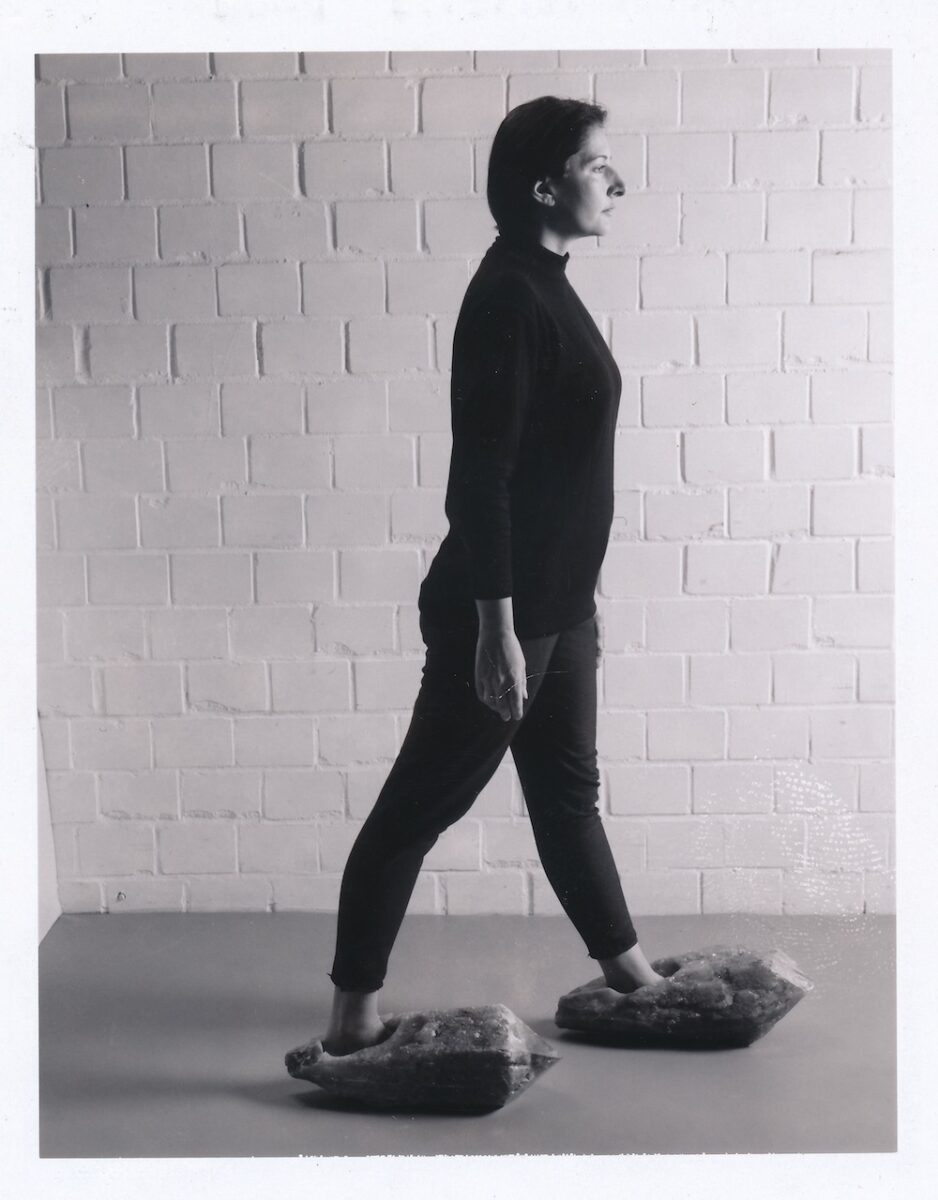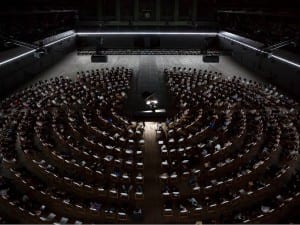A woman stands completely still. Beside her is a long table covered by a white tablecloth and an assortment of items – among them flowers, lipstick, a brush, a fork, a scalpel and a gun. A note reads: “Instructions. There are 72 objects on the table that one can use on me as desired. Performance. I am the object. During this period I take full responsibility.” Over six hours on a single day in 1974, Belgrade-born, New York-based artist Marina Abramović (b. 1946) performed this piece, titled Rhythm 0, at Studio Morra in Naples. It was an artwork but also an experiment to see how far the public would go. Ultimately, it led Abramović – who still has the scars – to state that “in your own performances you can go very far, but if you leave decisions to the public, you can be killed.” (Susie Hodge, ArtQuake, 2022).
Over the past four decades, performance art has shifted from the margins towards the mainstream. There are now a network of major festivals dedicated to live art internationally, with the UK hosting Fierce in Birmingham and SPILL in Ipswich. In 2010 the Museum of Modern Art, New York, staged a major Abramović career retrospective, which saw the artist perform The Artist is Present for 736 hours and 30 minutes, sitting silently at a table whilst visitors took turns to sit opposite her. Over nearly three months, she met the gaze of 1,000 strangers. Later, a 2012 documentary would bring the piece to a wider audience.

In Gates and Portals, a new exhibition this autumn at Modern Art Oxford, the Belgrade-born, New York-based artist again asks visitors to become performers. In small groups they will move through different states of consciousness, following the artist’s instructions. The artist describes this work – which draws on ideas relating to the religious practices of Tibetan Buddhism and Hinduism – as the “most minimal and the most radical conceptually” she has ever made. This is the second time Abramović’s work has been shown at the gallery, the first being in 1995, where video installations Cleaning the Mirror I-III saw the artist interact with artefacts from the Pitt Rivers collection. Gates and Portals also has ties to the Oxford-based anthropology and archaeology museum; it was developed during a 2021 residency there.
Whilst Rhythm O was extreme, it is nonetheless a key example of Abramović’s pioneering approach – where human nature and reality become materials. “Normally visitors to museums never have any kind of demands made of them; they come, they see the work, they go,” she says. “They’re silent witnesses and they’re passing by. In my case, here the visitors are not silent witnesses, they’re part of the show and they participate in the show. Their experience with the object is the artwork itself, without that experience the objects are empty.” In a world of deep fakes and scripted reality TV, we have never been more enchanted by ‘reality’, nor less sure of where it begins and ends. Abramović’s work feels as fresh as ever.
Gates and Portals runs from 24 September to 5 March 2023 at Modern Art Oxford.
Words: Rachel Segal Hamilton
Image Credits:
1. Marina Abramović, Presence and Absence,2022. Courtesy of the artist and the Pitt Rivers Museum, University of Oxford. Photo: Tim Hand.
2. Marina Abramović, Objects, Performance, Video, Sound, 1995.





